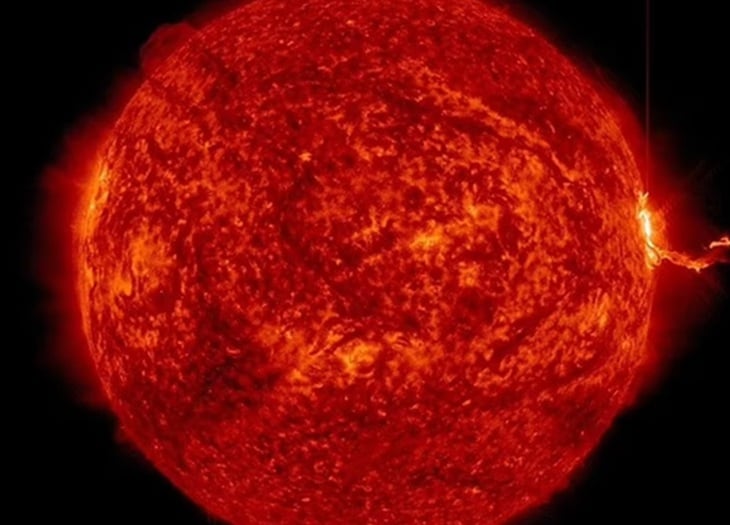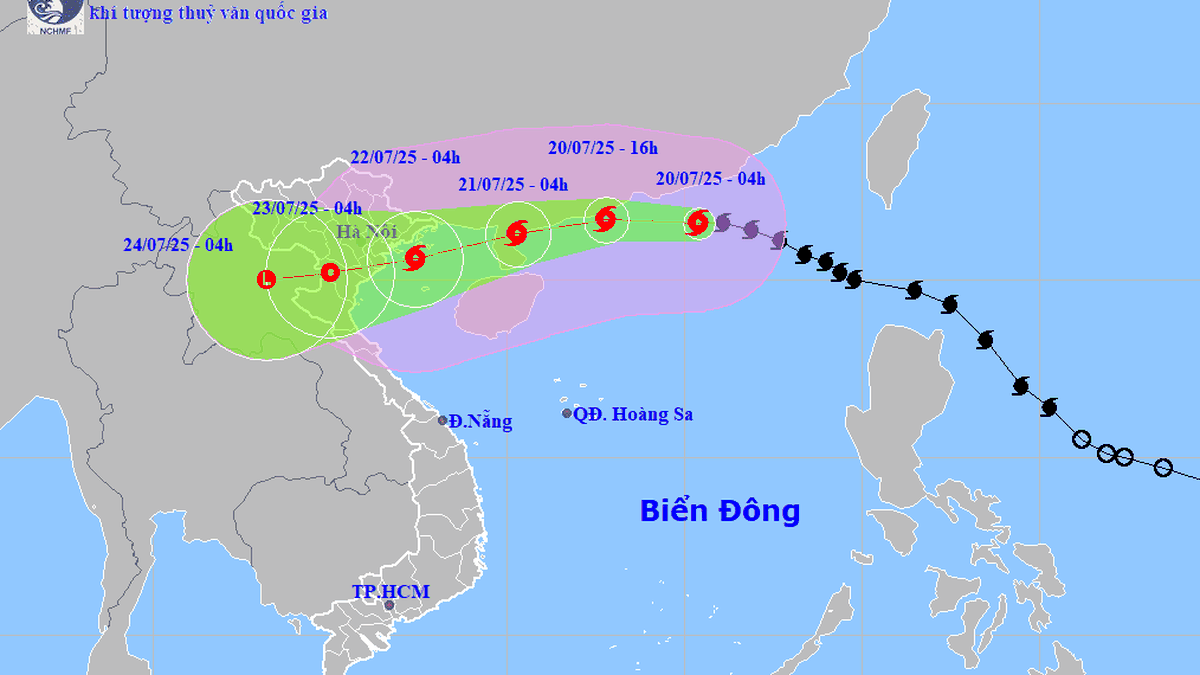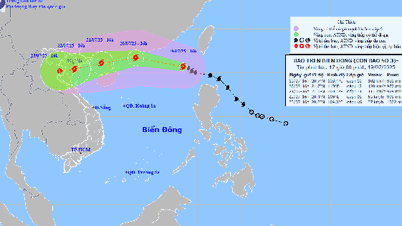
Sunspot AR 4087 released an X-class solar flare on May 14 - Photo: NASA
On May 14, sunspot AR 4087 emitted X- and M-class solar flares — including flares of X2.7, M5.3 and M.74 — causing radio blackouts across Europe, Asia and the Middle East as these regions were illuminated by the Sun at the time.
Solar storms of this magnitude are uncommon, according to the US Space Weather Prediction Center (SWPC). The solar storm scale is divided into five levels: A, B, C, M and X, with each level representing a 10-fold increase in energy.
Class X solar flares are the most powerful on the solar storm scale, capable of disrupting communications, damaging satellites and even threatening power grids on Earth.
Solar flares will send a powerful stream of X-rays and ultraviolet radiation hurtling toward Earth at the speed of light, rapidly ionizing our planet’s upper atmosphere. The sudden change will cause radio disruption in affected areas, according to Space.com on May 15.
The US National Aeronautics and Space Administration (NASA) and the US National Oceanic and Atmospheric Administration (NOAA) announced that the Sun would reach its maximum in October 2024. Now, more than six months later, the Sun's activity appears to have weakened but is still quite intense.
The Sun rotates counterclockwise. This means AR 4087 is more likely to direct some of its solar flares towards Earth.
Experts warn there could be more flares as sunspot AR 4087 passes directly across Earth next week, raising the possibility of more solar storms and potentially affecting our planet's geomagnetic activity and aurorae.
"This spectacle is getting more and more intense, especially as the sunspot gets closer. We will have to wait and see what it does in the coming days," wrote aurora hunter Vincent Ledvina on social network X.
Source: https://tuoitre.vn/bao-mat-troi-gay-mat-song-vo-tuyen-dien-rong-co-the-tiep-dien-trong-tuan-sau-20250516111651238.htm

































































































Comment (0)